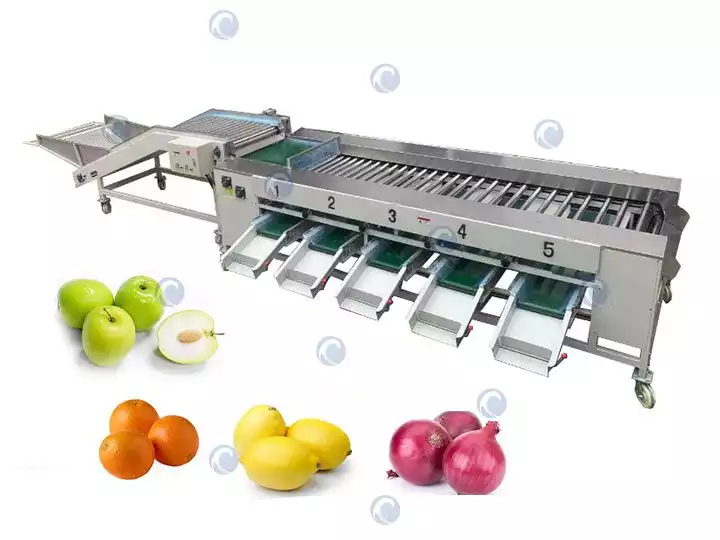Fruit Sorting Machine: Improving Efficiency and Product Quality in the Industry
Fruit sorting machine is an essential component of the fruit processing industry. These machines automate the task of separating fruits into different grades, based on size, color, ripeness, and other factors. They help ensure that only high-quality fruits reach the market, while the lower grade fruits can be used for other purposes such as making juice or jams.

Importance of Fruit Sorting in the Industry
Fruit sorting is crucial to the fruit industry because it helps maintain product quality and consistency. By removing inferior fruits from the supply chain, sorting machines ensure that consumers receive only the best quality products. This, in turn, helps build consumer trust in the brand and encourages repeat purchases.
History of Fruit Sorting Machine
The need for fruit sorting has been around for centuries. In the past, farmers sorted fruits by hand, using simple tools such as baskets and scales. This process was tedious, time-consuming, and prone to human error. As the demand for fruits increased, more efficient methods of sorting became necessary.
In the 20th century, the first automated fruit sorting machine is developed. These early machines were crude and had limited capabilities. They relied on basic sensors and mechanical systems to sort fruits based on size and weight.
As technology advanced, so did the capabilities of fruit grading machine. Today’s machines use sophisticated sensors, cameras, and algorithms to sort fruits with high precision and speed.
How Fruit Sorting Machine Work
There are many types of fruit sorting machines, each designed for a specific type of fruit and sorting requirement. Some of the most common types of sorting machines include:
Optical sorting machines: These machines use cameras and image processing software to sort fruits based on color, size, shape, and other visual characteristics.
Weight-based sorting machines: These machines sort fruits based on their weight. They use load cells or other sensors to measure the weight of each fruit as it passes through the machine.
Size sorting machines: These machines sort fruits based on their size. They use mechanical rollers or other devices to separate fruits into different size categories.
Different methods of sorting include:
Manual sorting: This involves sorting fruits by hand, using visual inspection and basic tools such as knives and scales. It is a labor-intensive process that is prone to human error.
Automated sorting: This involves using machines to sort fruits automatically. It is more efficient and accurate than manual sorting.
Benefits of Using a Fruit Sorting Machine
Increased efficiency: A sorting machine can sort fruits at a much faster rate than manual sorting. This helps reduce labor costs and increases production capacity.
Improved product quality: A sorting machine ensures that only high-quality fruits reach the market, which improves brand reputation and consumer satisfaction.
Reduced labor costs: Automating the sorting process reduces the need for manual labor, which can lead to significant cost savings over time.
Future of Fruit Sorting Machine
As technology continues to advance, the capabilities of fruit sorting machines will continue to improve. Future machines may take advantage of artificial intelligence, machine learning, and other advanced technologies to sort fruits with even greater accuracy and speed.
Conclusion
Fruit sorting machine is an essential component of the fruit processing industry. They help ensure that only high-quality fruits reach the market, while the lower grade fruits can be used for other purposes such as making juice or jams. As technology continues to advance, we can expect to see even more sophisticated and efficient fruit sorting equipment in the future.